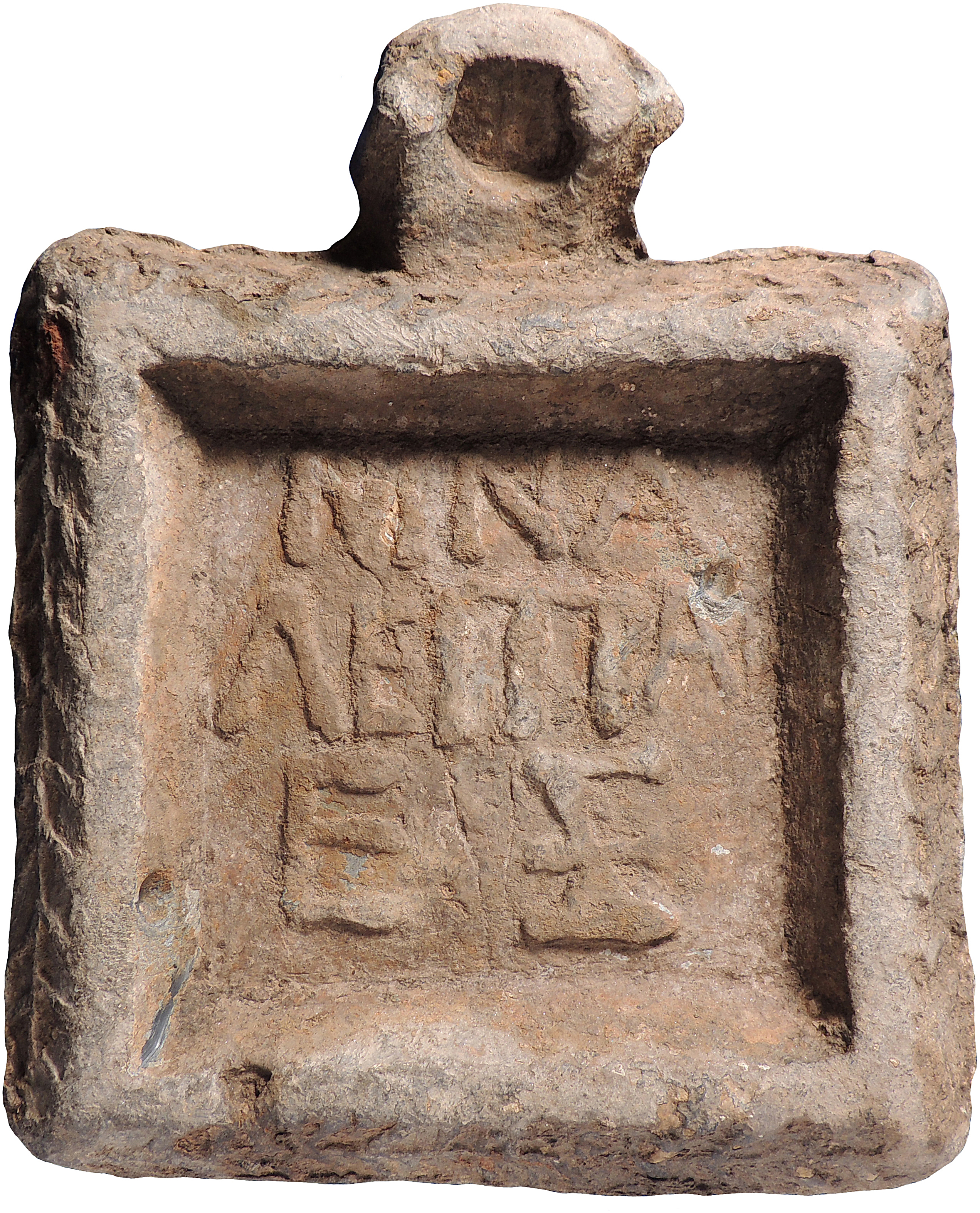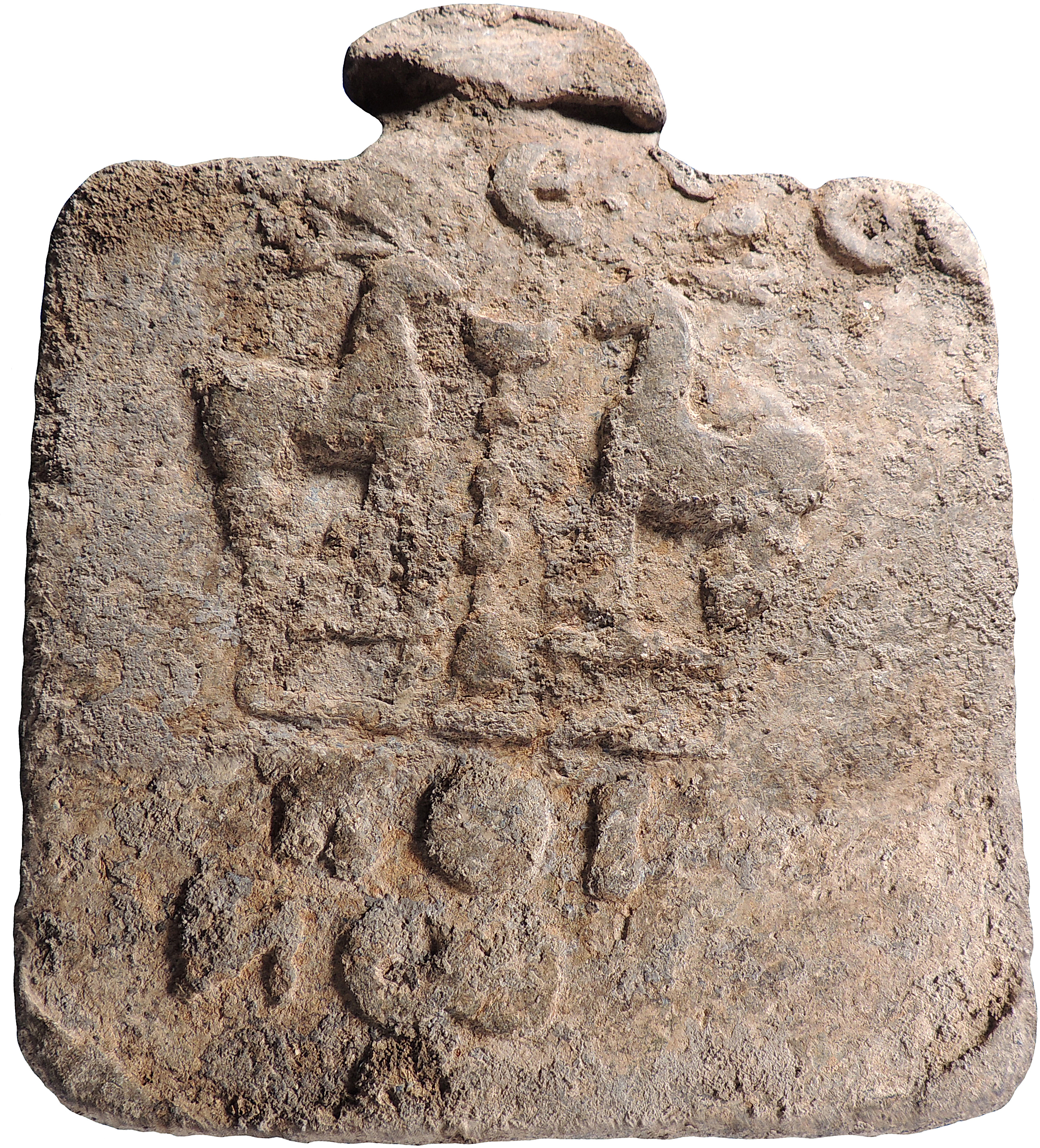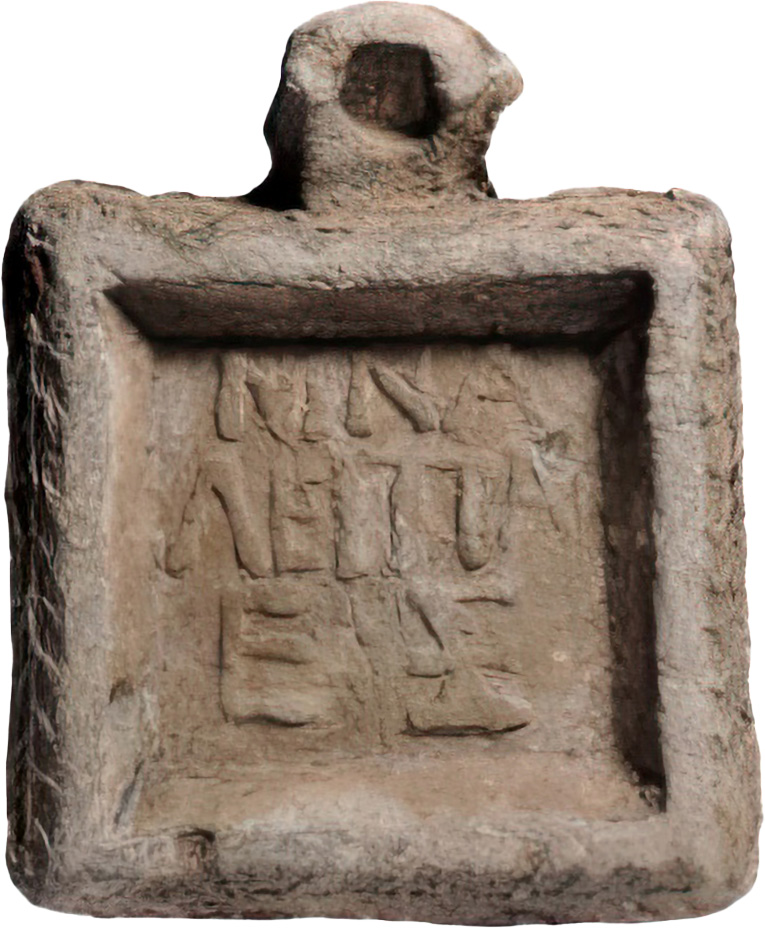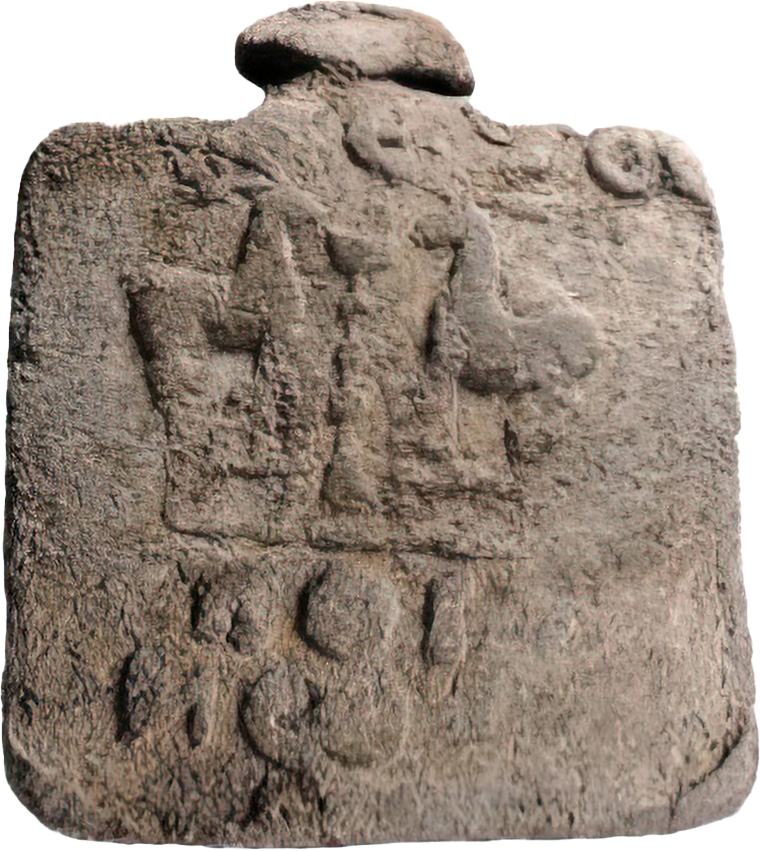
-
Copyright credit: Eskinazi Collection / Photographer : Thomas Leblanc
-
Copyright credit: Eskinazi Collection / Photographer : Thomas Leblanc
-
Copyright credit: Tekin 2024

-
Copyright credit: Tekin 2024

-
Copyright credit: Tekin 2024
-
Copyright credit: Tekin 2024
-
Copyright credit: Tekin 2024
-
Copyright credit: Tekin 2024
-
Copyright credit: BibleLandPictures.com

-
Copyright credit: BibleLandPictures.com

ARCHAEOLOGICAL DESCRIPTION OF THE WEIGHT
Authority
Mint
Ephesos
Denomination
1 Mina
,
6 Libras = 6 Litras
Material
Lead
Manufacture
Cast
Shape
Square
Length
13.40 cm
Width
16.50 cm
Height
1.60 cm
Metrology
| Mass (g) | Mass (grain) | Date of measurement | Reference | fragmented | cleaned | reference weight |
|---|---|---|---|---|---|---|
| 2095.50 | - | April 16, 2024 | Autopsy Thomas Leblanc | No | No | Yes |
| 2095.00 | - | - | Tekin 2024 | No | No | No |
Iconography
| Symbol | Technique | Direction | Position | Number | Synecdoche |
|---|---|---|---|---|---|
| Herringbone pattern | Relief | ||||
| Artemis / Diana | Stamped / Countermarked / Struck | ||||
| Thymiaterion | Relief | ||||
| Stag / Doe | Relief | Standing | Two |
Wear
Corrosion
Handle
Yes
Suspension hole
No
Recarved mould
No
Recarved weight
No
Intentionally destroyed
No
Archaeological description
Width without handle: 13,4 cm.
Tekin 2024: 5-mna / 7-litra, Pb 2095 g, 132x166 mm. Inv. no. 721. Lead weight, square in form with raised and beveled edges, decorated with short incised lines; handle on the top. Unpublished. On the top, ΜΝΑ / ΛΕΙΤΡΑΙ / Ε–Ƶ in three lines, in relief. So, the names of two standards, ie mna and litra, take place together with E and Z which stand for 5 and 7 stating that they refer to 5-mna (mna of 419 g) and 7-litra (litra italike of 299.28 g) in unit. However, for both standards, the existing mass of this weight is slightly low. This weight was likely produced during a transitional period when the Ephesians began to commonly use the libra system, marking a shift from the mna system. We know that the establishment of the province of Asia in Western Anatolia occurred during the Late Hellenistic period. It is likely that the libra system was also in use in Ephesus from at least the end of the 2nd century BC onwards. That's why this weight bears the names of both units. On the other hand, weights stating double units are rare. On the handle, circular stamp with the cultus statue of Artemis Ephesia. On the bottom, a thymiaterion flanked by two stags, each standing on base and facing each other. Illegible inscription above and below; letters seen are: Ε [.] Ο above and ΠΟΙ / ΝⲰ below. All are in relief. It may be dated to the late Hellenistic period.
Tekin 2024: 5-mna / 7-litra, Pb 2095 g, 132x166 mm. Inv. no. 721. Lead weight, square in form with raised and beveled edges, decorated with short incised lines; handle on the top. Unpublished. On the top, ΜΝΑ / ΛΕΙΤΡΑΙ / Ε–Ƶ in three lines, in relief. So, the names of two standards, ie mna and litra, take place together with E and Z which stand for 5 and 7 stating that they refer to 5-mna (mna of 419 g) and 7-litra (litra italike of 299.28 g) in unit. However, for both standards, the existing mass of this weight is slightly low. This weight was likely produced during a transitional period when the Ephesians began to commonly use the libra system, marking a shift from the mna system. We know that the establishment of the province of Asia in Western Anatolia occurred during the Late Hellenistic period. It is likely that the libra system was also in use in Ephesus from at least the end of the 2nd century BC onwards. That's why this weight bears the names of both units. On the other hand, weights stating double units are rare. On the handle, circular stamp with the cultus statue of Artemis Ephesia. On the bottom, a thymiaterion flanked by two stags, each standing on base and facing each other. Illegible inscription above and below; letters seen are: Ε [.] Ο above and ΠΟΙ / ΝⲰ below. All are in relief. It may be dated to the late Hellenistic period.
Autopsy
Yes
INSCRIPTION
| Language | Technique | Legend type |
|---|---|---|
| Greek | Relief | Denomination, Unidentified |
Fac simile
ΜΝΑ
ΛΕΙΤΡΑΙ
ΕΞ
Ε
ΠΟΙ
ИⲰ
Edition
Mνᾶ. | Λεῖτραι | ἕξ. || Ε|Π̣ΟΙ|ΝΩ.
Monogram
ARCHAEOLOGICAL CONTEXT
Findspot (region)
Findspot (site)
context
CIRCUMSTANCES OF ACQUISITION
Region
City
Date of first acquisition
circumstances
DATING OF THE WEIGHT
Curatorial Section
GREEK
,
ROMAN
Time frame
FROM
100
TO
300
Comments on Chronology
COLLECTION HISTORY
Collection
| Name | Date of acquisition | Inventory number |
|---|---|---|
| Eskinazi Collection | None | 721 |
Bibliography
| Reference | Page/Column | Reference (number) | Plate / Figure | Comment |
|---|---|---|---|---|
| Tekin 2024a | 58 | 61 | fig. 61 | None |
| Tekin 2024c | 18–22 | None | fig. 3 | None |
VARIA